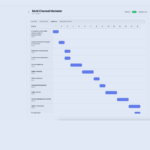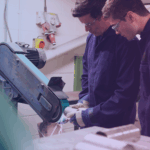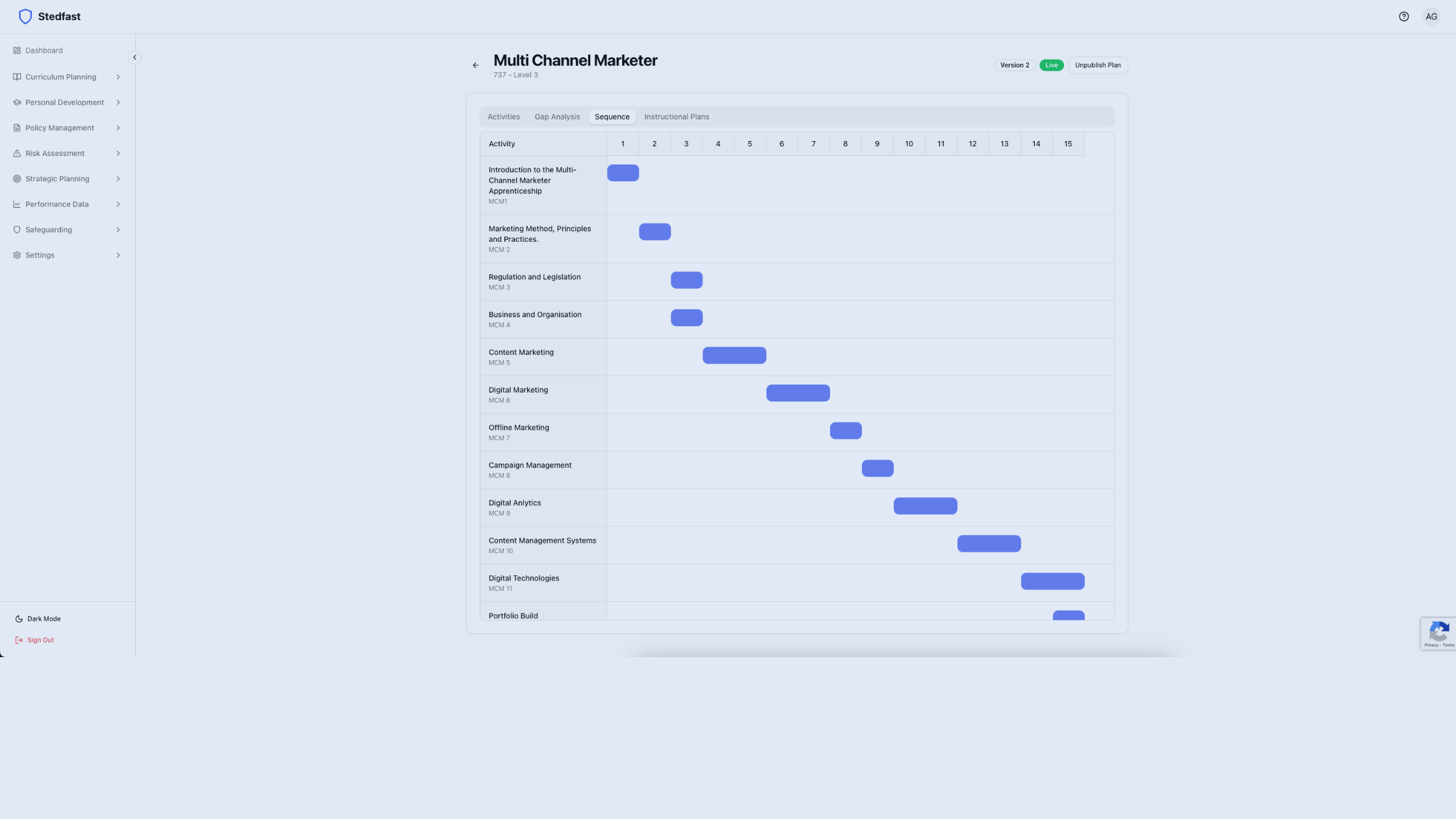In Technical and Vocational Education and Training (TVET), assessment methods play a key role in evaluating learners’ skills, knowledge, and competencies. As TVET trainers, understanding the various assessment approaches is essential for tailoring education to meet diverse learner needs, ensuring that training aligns with industry standards and prepares individuals for real-world challenges. This blog post explores the different types of assessment methods commonly used in TVET, with a particular focus on comparing the strengths and limitations of four selected methods: observation of performance in the work environment, examining products of work, skills tests, and oral and written questions. By exploring these, trainers can better adapt assessments to individual learners, promoting fairness, effectiveness, and inclusivity in TVET programmes.
TVET assessment goes beyond traditional testing; it encompasses practical, hands-on evaluations that reflect workplace realities. Whether you’re training apprentices in plumbing, electricians, or hospitality professionals, choosing the right assessment method can significantly impact learner engagement and outcomes. In this article, we’ll outline key assessment types, then dissect the pros and cons of the selected methods, always keeping the needs of individual learners at the forefront. This insight is crucial for TVET trainers aiming to optimise their practices and boost learner success.
Overview of Assessment Methods in TVET
TVET assessments are designed to measure not just theoretical knowledge but also practical skills and attitudes relevant to vocational fields. Common methods include:
- Observation of Performance in the Work Environment: Watching learners perform tasks in real or simulated workplaces.
- Examining Products of Work: Reviewing artefacts or outputs created by learners, such as welded joints or coded software.
- Discussing with the Learner: Engaging in conversations to probe understanding and experiences.
- Use of Others (Witness Testimony): Gathering input from colleagues, supervisors, or peers who have observed the learner.
- Looking at Candidate Statements: Analysing learners’ self-reflections or personal accounts of their work.
- Recognising Prior Learning (RPL): Crediting existing skills and knowledge from previous experiences.
- Assessments in Simulated Environments: Conducting evaluations in controlled settings that mimic real workplaces.
- Skills Tests: Practical exams testing specific abilities under timed conditions.
- Oral and Written Questions: Quizzing learners verbally or in writing to assess knowledge.
- Assignments: Task-based projects requiring research and application.
- Projects: Extended undertakings where learners plan and execute comprehensive tasks.
- Case Studies: Analysing real or hypothetical scenarios to apply concepts.
These methods can be formative (ongoing feedback) or summative (final evaluation), and often a blend is used to provide a holistic view of learner progress. The choice depends on the qualification, industry requirements, and learner profiles, ensuring assessments are valid, reliable, and fair.
Comparing Strengths and Limitations of Selected Assessment Methods
To provide a balanced perspective, we’ll compare four diverse methods: observation of performance in the work environment, examining products of work, skills tests, and oral and written questions. Each is evaluated in terms of strengths and limitations, with reference to individual learner needs such as learning styles, disabilities, cultural backgrounds, and prior experiences. This comparison helps TVET trainers select methods that accommodate diversity and enhance equity.
1. Observation of Performance in the Work Environment
This method involves assessors directly watching learners carry out tasks in actual workplaces, such as a mechanic repairing an engine on-site.
Strengths:
- Authenticity and Relevance: It provides real-world evidence of competence, directly aligning with industry demands. For learners with practical learning styles, like kinesthetic individuals in construction trades, this method boosts confidence by allowing them to demonstrate skills in familiar settings.
- Holistic Evaluation: Assessors can observe not just technical skills but also soft skills like teamwork and safety adherence, catering to learners who excel in applied contexts rather than theoretical ones.
- Immediate Feedback: Trainers can offer on-the-spot guidance, supporting learners with additional needs, such as those requiring verbal cues due to literacy challenges.
Limitations:
- Logistical Challenges: Arranging workplace observations can be time-consuming and costly, particularly for remote or part-time learners, potentially disadvantaging those with mobility issues or in underserved areas.
- Subjectivity and Bias: Assessors’ interpretations may vary, risking unfairness for learners from diverse cultural backgrounds where communication styles differ.
- Stress Factors: Being observed can induce anxiety, negatively impacting neurodiverse learners or those with performance anxiety, leading to underrepresentation of true abilities.
In reference to individual needs, this method suits hands-on learners but may require adaptations, like video recordings, for those unable to participate in live settings.
2. Examining Products of Work
Here, assessors evaluate tangible outputs, such as a chef’s prepared dish or a welder’s fabricated piece, against set criteria.
Strengths:
- Objectivity and Evidence-Based: Products provide concrete proof of skills, reducing bias and allowing for consistent judgments. This benefits visual or tactile learners in fields like graphic design, where portfolios showcase creativity.
- Flexibility: Learners can produce work at their own pace, accommodating those with fluctuating schedules or disabilities, such as chronic illnesses that affect attendance.
- Encourages Reflection: Reviewing products fosters self-assessment, helping learners with prior experience (e.g., through RPL) to build on existing knowledge.
Limitations:
- Limited Context: Products don’t reveal the process, potentially overlooking innovative problem-solving in learners who struggle with final presentation due to resource constraints.
- Resource Dependency: Access to materials can disadvantage economically challenged learners, widening inequalities in TVET programmes.
- Plagiarism Risks: Ensuring authenticity is tricky, especially for digital submissions, which might affect trust in assessments for international learners.
Tailored to individual needs, this method empowers independent workers but may need support like material provisions for disadvantaged groups to ensure equity.
3. Skills Tests
Skills tests are structured, often timed evaluations of specific abilities, like a typing test for administrative roles or a soldering task in electronics.
Strengths:
- Standardisation and Reliability: Uniform conditions ensure fair comparisons, ideal for large cohorts and learners needing clear benchmarks, such as those transitioning from academic to vocational paths.
- Efficiency: Quick to administer and mark, saving time for busy TVET trainers and suiting learners who perform well under pressure, like competitive apprentices.
- Targeted Skill Measurement: Directly assesses competencies, benefiting learners with focused needs, such as those requiring certification in safety-critical areas like healthcare.
Limitations:
- Artificiality: Tests may not replicate real-world variability, disadvantaging experiential learners who thrive in dynamic environments rather than controlled ones.
- Time Pressure: Can exacerbate issues for learners with dyslexia or anxiety, leading to inaccurate reflections of potential.
- Narrow Focus: Overlooks broader competencies, potentially marginalising holistic learners or those with interdisciplinary skills.
Considering learner needs, skills tests work for methodical individuals but often require accommodations, like extended time, to support diverse abilities.
4. Oral and Written Questions
This involves questioning learners verbally (e.g., interviews) or in writing (e.g., quizzes) to gauge understanding.
Strengths:
- Versatility: Adaptable to various formats, oral for those with writing difficulties and written for reflective thinkers, making it inclusive for learners with disabilities like visual impairments (via audio).
- Depth of Insight: Allows probing for deeper knowledge, aiding learners from non-traditional backgrounds to articulate experiences verbally.
- Cost-Effective: Requires minimal resources, accessible for TVET programmes in resource-limited settings, benefiting global learners.
Limitations:
- Language Barriers: Written questions may disadvantage non-native speakers or those with literacy issues, while oral can be intimidating for shy individuals.
- Subjectivity in Oral: Assessors’ biases might influence scoring, affecting fairness for culturally diverse learners.
- Surface-Level Assessment: May not capture practical skills, limiting its use for kinesthetic learners in hands-on TVET fields.
In terms of individual needs, this method is flexible but demands cultural sensitivity and adjustments, like translators, to meet varied learner profiles.
Conclusion: Tailoring Assessments for Optimal TVET Outcomes
Selecting the right assessment methods in TVET is about balancing strengths and limitations to address individual learner needs effectively. By combining methods—like using observation alongside skills tests—trainers can create comprehensive, learner-centred approaches that foster inclusivity and real-world readiness. As TVET evolves, staying informed on these methods ensures trainers deliver high-quality education that meets global standards and empowers diverse learners.
FAQs
What are the main types of assessment methods used in TVET?
The main types include observation in work environments, examining products, skills tests, oral and written questions, projects, case studies, and recognising prior learning, each tailored to evaluate practical skills and knowledge.
What are the strengths of observation as an assessment method in TVET?
Observation offers authentic, real-world evaluation of skills, holistic insights into performance, and immediate feedback, making it ideal for hands-on learners in vocational training.
What limitations do skills tests have in TVET assessments?
Skills tests can be artificial, induce time pressure stress, and focus narrowly on specific abilities, potentially disadvantaging learners with anxiety or those needing contextual evaluations.
How do oral and written questions benefit individual learners in TVET?
They provide versatile, cost-effective ways to assess knowledge depth, adaptable to diverse needs like literacy challenges or cultural backgrounds, promoting inclusivity.
Why is examining products of work a reliable assessment method in TVET?
It offers objective, evidence-based evaluation of outputs, flexibility in pacing, and encourages reflection, though it requires ensuring authenticity and access to resources for all learners.






